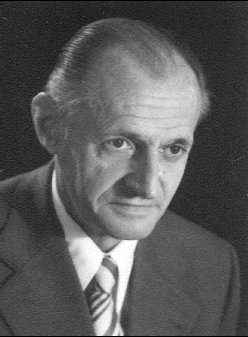- Hans-Wilhelm Koepcke
Infobox Person
name = Hans-Wilhelm Koepcke

image_size = 300px
caption = Hans-Wilhelm Koepcke ca. 1980
birth_date = birth date|1914|6|13|mf=y
birth_place =Pomerania
death_date = death date and age|2000|11|21|1914|6|13|mf=y
death_place =Hamburg ,Germany
occupation =zoologist ,ornithologist ,herpetologist
spouse =Maria Koepcke
children = Juliane Diller KöpckeHans-Wilhelm Koepcke (b.
Pomerania ,June 13 ,1914 , d.Hamburg ,Germany ,November 21 ,2000 ) was a famouszoologist andornithologist . He was married to another famous ornithologist,Maria Koepcke and was the father ofmammalogist Juliane Diller Köpcke, who became famous as the sole survivor of the crash of LANSA Flight 508.cite web|url=http://elibrary.unm.edu/sora/ON/v013n02/p0215-p0218.pdf|title=Hans-Wilhelm Koepcke Obituary|accessdate=2007-01-06]cientific work in Peru
Koepcke studied at the
University of Kiel ,Germany , earning adoctorate inNatural Sciences in 1947. He then traveled toPeru where he started work at the Javier Prado Museum of Natural History inLima , an institution affiliated with theNational University of San Marcos .Along with his wife Maria, whom he met at the
University of Kiel and later married in Peru, he spent much of his life studying the Peruvian andSouth America nfauna . He co-authored with Maria many scientific publications, mostlyornithological . His greatest individual academic accomplishment was the publication (in German) of the 1,684 page two volume opus entitled "Die Lebensformen: Grundlagen zu einer universell gültigen biologischen Theorie" (Life Forms: The basis for a universally valid biological theory), in 1971 and 1973. According to François Vuilleumier, curator of the Department of Ornithology,American Museum of Natural History inNew York : [cite web|url=http://www.amnh.org/science/divisions/vertzoo/bio.php?scientist=vuilleumier|title=François Vuilleumier Resume|accessdate=2007-01-06]The number of topics covered in this monumental work (volume 1, pages 1–789; volume 2, pages 790–1,684) issimply astonishing, and includes the concept of adaptation, death of individuals and of species, homology, systematics, ecological specialization, teleology, convergences, social signalization, mimicry, sexuality, mating systems, and many others. Richly illustrated, this work draws its empirical examples from many forms of life, where birds, and Peruvian or South American birds especially, figure prominently.
Tragedy and miraculous survival
On
Christmas Eve of 1971, his wife Maria and daughter Juliane (who was 17 years old at the time) were traveling from Lima toPucallpa , both in Peru, onLANSA Flight 508 to join him for the holidays, when theirLockheed L-188 Electra turboprop encountered athunderstorm and was struck bylightning , exploding and crashing into theAmazon jungle .cite web|url=http://www.super70s.com/Super70s/Tech/Aviation/Disasters/71-12-24(Lansa).asp |title=17-Year-Old Only Survivor in Peruvian Accident|author=Patrick Mondout|publisher=Super70s.com|accessdate=2007-01-07] Maria died in the crash, while Juliane, who fell 2 miles down to the jungle still strapped to her seat, was the only survivor of the 92 persons on board the flight. Despite sustaining a brokencollar bone and an eye injury in the fall, Juliane was able to walk for 10 days in the dense jungle until reaching civilization. She later fully recovered from her injuries and completed her studies in Germany, and became amammalogist specializing inbats .Return to Germany
After returning from Peru to Germany, Koepcke lived in
Hamburg , where he worked at theherpetology department and taughtzoology at the Zoological Institute and Museum of theUniversity of Hamburg . [cite web|url=http://www.panguana.de/Introduction/Panguana/panguana.html|title=Panguana|accessdate=2007-01-07]References
Wikimedia Foundation. 2010.
